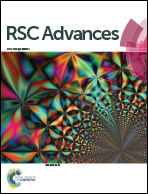Substrate induced diastereoselective hydrogenation/reduction of arenes and heteroarenes
Abstract
Chiral, either racemic or optically pure, substituted cyclohexanes, piperidines, tetrahydrofurans and pyrrolidines can be prepared by the diastereoselective hydrogenation/reduction of the corresponding aromatic and heteroaromatic precursors, exploiting the presence of one or more stereocenters present in the ring substituent(s), where the sense and level of asymmetric induction can be the result of different factors: the rigidity or flexibility of the substrate, the presence of an appropriate functionality in the lateral substituent which can stabilize a particular conformation of the molecule, especially in pyridine and furan derivatives, the nature of the catalyst or the reducing system, and the experimental conditions.


 Please wait while we load your content...
Please wait while we load your content...